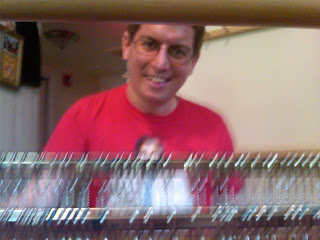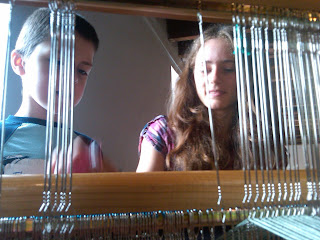Allegra and her mom Cindy enjoy a few hours of weaving.
According to social development research, social development is the cog wheel for academic success. (Yovanka and Winsler, 2006; Parker and Asher, 1987;Coie et al. 1990) The work of Eric Erikson shows that social development is an ongoing process that takes place throughout the entire lifespan. In today's industrialized society mainstream propaganda has bolstered academic learning while neglecting the continuous social foundation to why and how an individual learns. In response to the link between social development and academic success, peer based learning and socially based expressive arts experiences have the potential to manifest academic success throughout the lifespan.
"I love it at Weaving Connections. Weaving is great occupational therapy and most of all Lorenzo is an awesome friend to weave with." Robert
Lorenzo problem solves how to wind the bobbin.
Expert shuttle threader Nastassja lends Sam a hand.
"When I go back to school I am going to write about what I created at Weaving Connections." Taylor age12
"We all learn from each other in the studio."
"When I was weaving I felt happy and expressive. I created something that was all mine. " Isabelle age 10
"SAORI weaving has become a meditation for me. My creative expression at the loom brings calm to my day. A calm that I share with my friends and family through the projects I create." Sue-adult




















